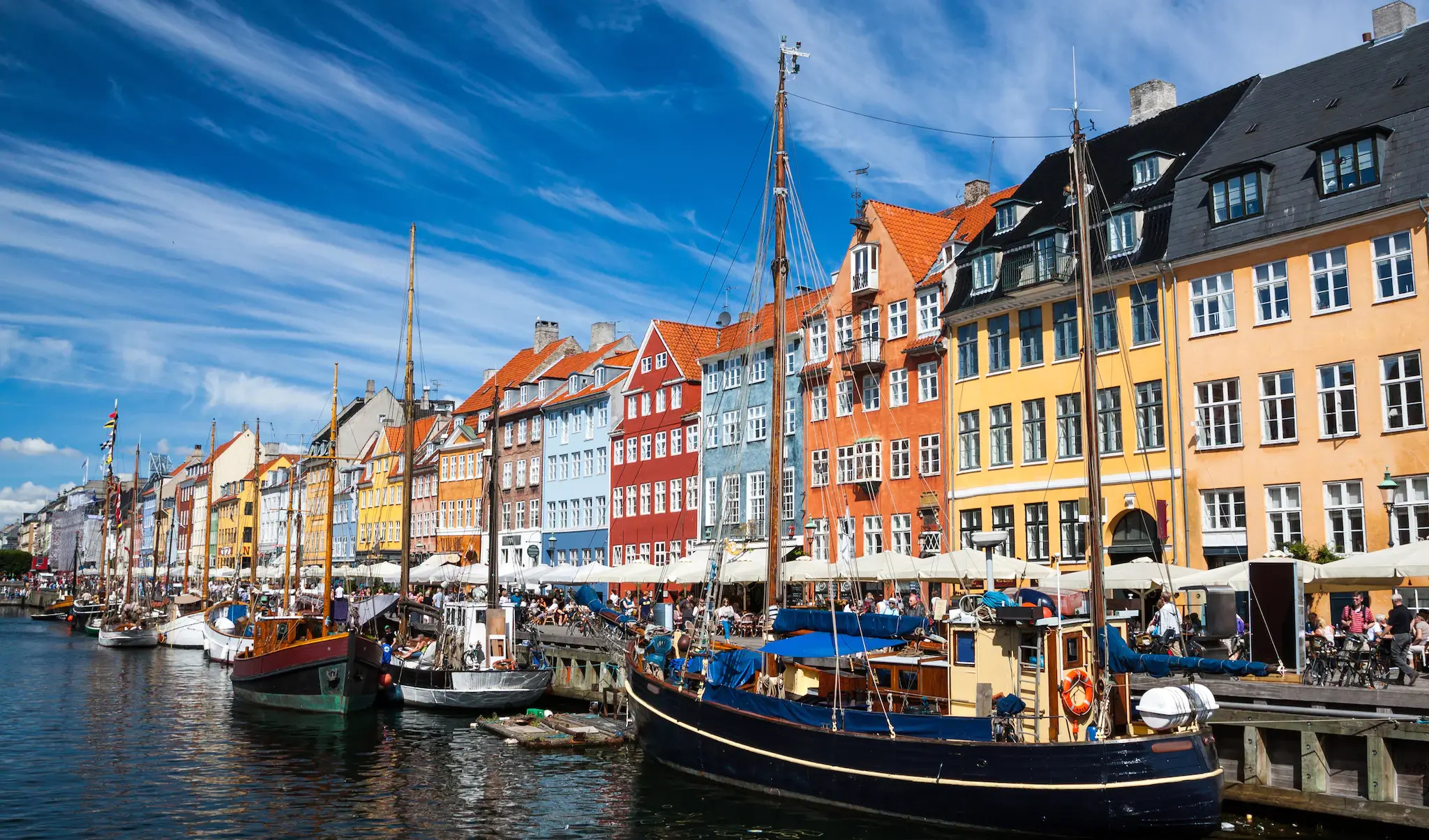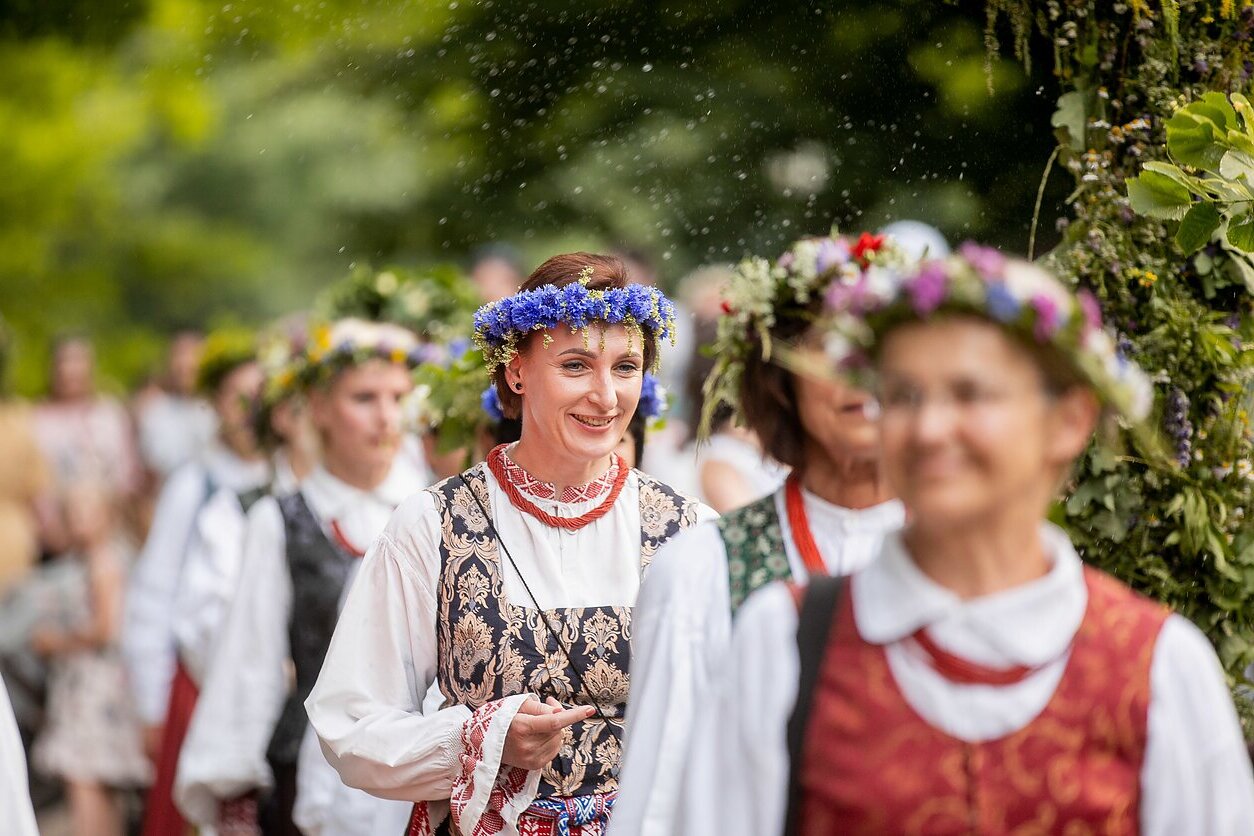
Copenhagen, the capital city of Denmark, is a vibrant and charming destination that offers a unique blend of history, culture, and modernity. Situated on the eastern coast of the island of Zealand, Copenhagen is known for its picturesque canals, impressive architecture, and bike-friendly infrastructure. From the iconic Little Mermaid statue to the colorful Nyhavn waterfront, this city is filled with iconic landmarks and hidden gems waiting to be explored.
But there’s more to Copenhagen than meets the eye. In this article, we will uncover 37 fascinating facts about Copenhagen that will give you a deeper insight into its rich history, innovative spirit, and renowned lifestyle. Whether you’re planning a trip to Copenhagen or simply want to expand your knowledge about this amazing city, these facts will provide you with a deeper appreciation for everything Copenhagen has to offer.
Key Takeaways:
- Copenhagen, the capital of Denmark, is a vibrant city with a rich history, stunning architecture, and a strong focus on sustainability. From the iconic Little Mermaid statue to the bustling Nyhavn waterfront, there’s something for everyone to explore and enjoy in this beautiful city.
- With its bike-friendly infrastructure, world-class cultural attractions, and diverse culinary scene, Copenhagen offers a unique blend of tradition and innovation. Whether you’re a history buff, a foodie, or an art enthusiast, Copenhagen has something special to offer.
Copenhagen is the capital city of Denmark.
Copenhagen, known as København in Danish, is the vibrant and cultural heart of the country.
It is one of the oldest cities in Northern Europe.
With roots dating back to the 10th century, Copenhagen is steeped in history, making it a fascinating destination for visitors.
Copenhagen is renowned for its Danish design.
The city embraces innovative and functional design, with iconic landmarks such as the Royal Danish Playhouse and the Opera House showcasing its architectural prowess.
The Little Mermaid statue is a popular tourist attraction.
Inspired by Hans Christian Andersen’s fairytale, the statue has become an emblem of the city and a must-visit spot for tourists.
Copenhagen is known for its sustainable transportation system.
The city is bicycle-friendly, with an extensive network of bike lanes, making it easy for locals and visitors to explore the city on two wheels.
Tivoli Gardens is the second oldest amusement park in the world.
Founded in 1843, Tivoli Gardens is a magical place where visitors can enjoy thrilling rides, beautiful gardens, and live entertainment.
Nyhavn is a picturesque waterfront district.
With its colorful buildings, historic ships, and lively atmosphere, Nyhavn is a popular spot for locals and tourists to relax and enjoy a drink or meal.
Christiania is a unique, self-governing neighborhood.
This alternative community is known for its artistic expression, sustainable living, and relaxed atmosphere, offering a different perspective on city life.
The Carlsberg Brewery is located in Copenhagen.
Beer enthusiasts will appreciate a visit to the Carlsberg Brewery, where they can learn about the brewing process and taste a variety of beers.
Copenhagen has a rich culinary scene.
From traditional Danish smørrebrød to Michelin-starred restaurants, Copenhagen offers a diverse range of culinary delights to satisfy every palate.
The Tivoli Concert Hall hosts world-class performances.
Music lovers can enjoy concerts by renowned artists and orchestras in this stunning venue located within Tivoli Gardens.
Copenhagen is a bike-friendly city.
With over 350 kilometers of bike lanes, cycling is not only a popular mode of transportation but also a great way to explore the city’s many attractions.
Copenhagen is home to the famous amusement park Bakken.
Bakken, located in the suburbs of Copenhagen, is the oldest operating amusement park in the world, offering a mix of thrilling rides and family-friendly entertainment.
The National Museum of Denmark showcases the country’s history and culture.
Visitors can explore artifacts and exhibitions that span thousands of years, providing insight into Denmark’s rich heritage.
The Danish royal family resides in Copenhagen.
The Amalienborg Palace serves as the winter residence of the Danish royal family, and the Changing of the Guard ceremony is a popular attraction for visitors.
Copenhagen is a green city with many parks and green spaces.
Parks like Kongens Have and Ørstedsparken offer a peaceful escape from the bustling city, providing opportunities for relaxation and recreation.
The Gefion Fountain depicts a mythological scene.
The fountain, located near the waterfront, portrays the mythological goddess Gefion driving her oxen and carving out the island of Zealand.
Christiansborg Palace is the seat of the Danish Parliament.
This grand palace is a symbol of the city’s political power and serves as the official residence of the Parliament, Prime Minister, and Supreme Court.
Copenhagen is a design hub.
The city is known for its cutting-edge design and hosts the annual Copenhagen Design Week, attracting designers and creative thinkers from around the world.
The Copenhagen Opera House is an architectural masterpiece.
Designed by Henning Larsen, this modern opera house offers breathtaking performances and stunning views of the harbor.
Copenhagen is a leader in sustainable urban planning.
The city strives to be carbon-neutral by 2025 and implements various initiatives to promote green living and reduce environmental impact.
The National Aquarium Denmark, Den Blå Planet, is the largest in Northern Europe.
Visitors can explore diverse aquatic life and learn about marine conservation in this state-of-the-art aquarium.
Copenhagen has a vibrant street food scene.
Markets like Torvehallerne and Paper Island offer a wide variety of international cuisines, making it a food lover’s paradise.
The longest pedestrian shopping street in the world, Strøget, is located in Copenhagen.
Shoppers can explore a mix of high-end fashion boutiques, local shops, and international brands in this bustling street.
The iconic Round Tower provides panoramic views of Copenhagen.
This 17th-century observatory offers visitors a unique perspective of the city from its rooftop.
Copenhagen hosts the annual Copenhagen Jazz Festival.
This world-renowned festival attracts jazz enthusiasts from around the globe to enjoy performances by acclaimed musicians in various venues across the city.
The famous shopping district of Østerbro is known for its upscale boutiques and trendy cafes.
Visitors can indulge in retail therapy and taste delicious pastries while exploring this chic neighborhood.
Copenhagen has a strong cycling culture.
With dedicated bike lanes, bike-sharing programs, and a bike-friendly infrastructure, it’s no wonder that Copenhagen is often referred to as the “City of Cyclists.”
The National Gallery of Denmark, known as SMK, houses an impressive collection of artwork.
From classic masterpieces to contemporary pieces, the museum offers a diverse range of art for art enthusiasts to enjoy.
The picturesque district of Frederiksberg is known for its beautiful parks and gardens.
Vistors can enjoy a leisurely stroll through the Frederiksberg Gardens or visit the Copenhagen Zoo, located within the district.
Copenhagen is at the forefront of clean energy initiatives.
The city aims to be carbon-neutral by 2025 and is investing in renewable energy sources, such as wind power, to reduce its environmental impact.
The Royal Danish Theatre offers world-class performances.
From ballet to opera and theater productions, the Royal Danish Theatre is a cultural hub where art lovers can indulge in exceptional performances.
The Danish Museum of Art and Design showcases Danish design from the past and present.
Visitors can explore innovative and influential design pieces that have shaped Danish design history.
Copenhagen is home to numerous universities and educational institutions.
With a strong emphasis on education, Copenhagen attracts students from all over the world, contributing to its vibrant and diverse atmosphere.
The Danish National Gallery houses the largest collection of Danish art in the world.
Art enthusiasts can immerse themselves in the works of renowned Danish artists, spanning various artistic movements.
Copenhagen has a thriving music scene.
From live music venues to music festivals, the city offers a rich array of musical genres and opportunities for music enthusiasts.
The city’s bike-sharing program, Bycyklen, makes it easy for visitors to explore Copenhagen on two wheels.
With numerous bike stations throughout the city, visitors can easily rent a bike and discover Copenhagen’s charm at their own pace.
Conclusion
In conclusion, Copenhagen is a fascinating city with a rich history, unique culture, and a commitment to sustainability. From its iconic landmarks such as the Little Mermaid statue and Tivoli Gardens, to its vibrant food scene and world-class museums, there is no shortage of things to see and do in this Danish capital. Its bicycle-friendly infrastructure and efficient public transportation system make it easy to navigate and explore all that the city has to offer. Furthermore, Copenhagen’s dedication to minimizing its environmental impact and promoting green initiatives serves as an exemplary model for other cities around the world. Whether you are interested in history, architecture, or simply immersing yourself in a new and vibrant city, Copenhagen has something for everyone.
FAQs
1. What is the best time to visit Copenhagen?
The best time to visit Copenhagen is during the summer months from June to August when the weather is pleasant, and many outdoor activities and festivals take place.
2. How do I get around in Copenhagen?
Copenhagen has an excellent public transportation system, including buses, trains, and a metro. Additionally, the city is very bicycle-friendly, and you can easily rent a bike to explore the city at your own pace.
3. What are some must-visit attractions in Copenhagen?
Some must-visit attractions in Copenhagen include the Nyhavn waterfront, Amalienborg Palace, Christiansborg Castle, and the National Museum of Denmark.
4. Is English widely spoken in Copenhagen?
Yes, English is widely spoken in Copenhagen, and most locals are fluent in English, making it easy for tourists to communicate and get around.
5. What is the local cuisine in Copenhagen?
Copenhagen is known for its innovative and Michelin-starred culinary scene. Some popular dishes to try include Smørrebrød (open-faced sandwiches), Danish pastries, and New Nordic cuisine.
6. Are there any day trips or excursions from Copenhagen?
Yes, there are several day trips you can take from Copenhagen, including visiting the historic town of Roskilde, the Louisiana Museum of Modern Art, and the stunning castles of Frederiksborg and Kronborg.
7. Is Copenhagen a safe city?
Copenhagen is generally considered a safe city with low crime rates. However, as with any destination, it is always advisable to take basic precautions and stay vigilant.
Copenhagen's vibrant culture extends beyond historical landmarks and eco-friendly initiatives. Foodies will delight in exploring the Copenhagen Cooking And Food Festival, showcasing Denmark's culinary prowess. Sports enthusiasts can learn more about FC Copenhagen, the city's beloved football club. Animal lovers should not miss reading about the extraordinary experiences at Copenhagen Zoo. Each of these aspects contributes to the rich tapestry that makes Copenhagen a truly captivating destination.
Was this page helpful?
Our commitment to delivering trustworthy and engaging content is at the heart of what we do. Each fact on our site is contributed by real users like you, bringing a wealth of diverse insights and information. To ensure the highest standards of accuracy and reliability, our dedicated editors meticulously review each submission. This process guarantees that the facts we share are not only fascinating but also credible. Trust in our commitment to quality and authenticity as you explore and learn with us.


